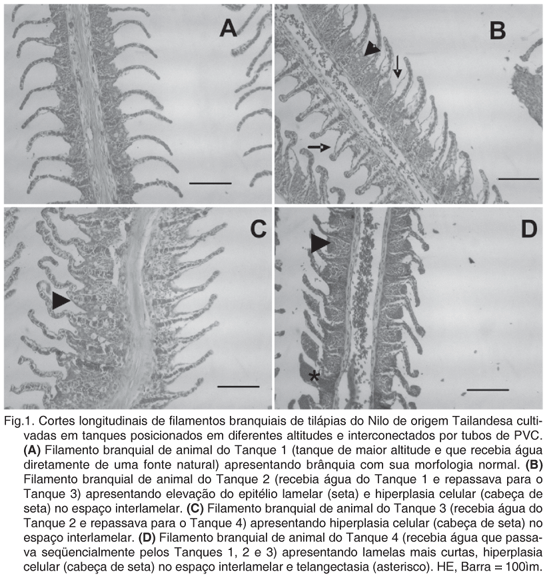The behavior of the gill epithelium of tilapias cultured in tanks at different altitudes and interconnected with PVC pipes was analyzed. Gill filaments of four specimens from four tanks (T1, T2, T3 e T4) sequentially interconnected were submitted to histological routine to obtain 5-mm-thick cuts that were stained with HE or submitted to histochemistry reactions PAS + diastase solution or Alcian Blue pH 2.5 or Alcian Blue pH 1.0. Considering the intermediary, apical and basal regions of the filaments, the lamellar area was measured and the amount of mucous cells was counted. It was verified that oxygen, pH, and temperature decreased progressively as the water flew from one tank to another. Thus, an increase was realized of the amount of mucous cells and the lamellar area in T2, as well as a progressive decrease of these measures on the tanks which received water from T2. Moreover, detachment of the gill epithelium, cellular hyperplasia in the interlamellar space, and telangectasias were observed in the fishes from T2, T3 e T4. It was concluded that the aquatic environment in tanks sequentially interconnected with PVC pipes suffers alterations from one tank to another, as that physico-chemical fluctuations reflect on the behavior of the gill epithelium through variations of the lamellar area and the amount of mucous cells.
Nile tilapia; intensive culture system; gill; morphometry; mucous cells; secundary lamellar cells







